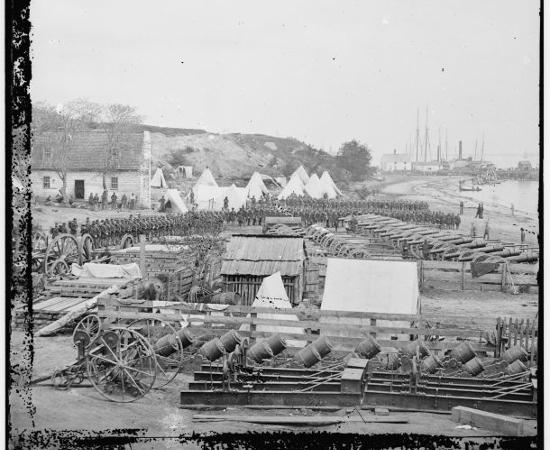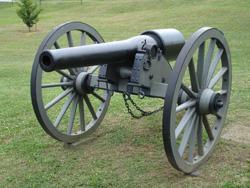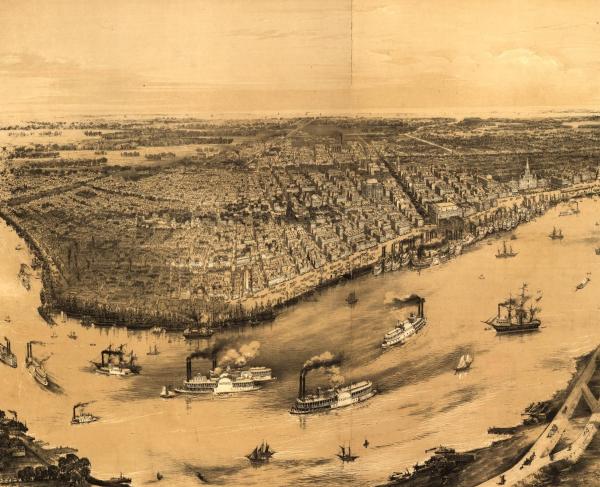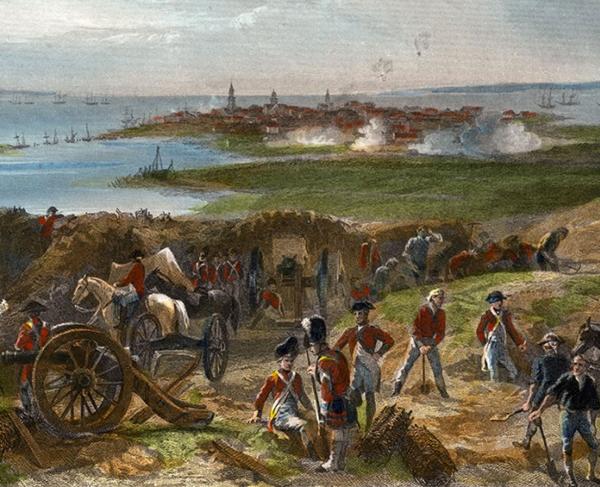10 Facts: Civil War Artillery

Artillery played an important role in many battles during the Civil War, and reflected how advances in technology could fundamentally change how wars and battles are fought. Please consider these quick facts about artillery to expand your knowledge and think more deeply about the role technology can play in changing history.
Fact #1: You need a team of ten to shoot a cannon.
Most artillery pieces were manned by teams of at least 9 soldiers, though only 2 were needed in a pinch. Multiple men were needed to sponge the barrel to prevent unplanned explosions, carry projectiles from the rear, ram the powder and shell to the back of the tube, and at least one, the gunner, for each piece was needed to judge the distance and position of the target and aim the weapon.
Fact #2: Artillery pieces were extraordinarily heavy.
While relatively mobile compared to siege or naval guns, field artillery pieces were still incredibly heavy. A gun meant to fire only 10-pound projectiles could weigh well over half a ton.

Fact #3: Horses were also important to the use of artillery in battle.
Artillery teams would need about six animals per gun to move it into position, and about six or eight to move the caissons, the carriages that carried powder and ammunition.
Fact #4: The Civil War saw the widespread use of rifled artillery pieces with grooves running down the tube.
These grooves would force a projectile to rapidly spin as it flew through the air, like a large, metal football, which would stabilize it. The guns, therefore, could fire further and much more accurately than the older style of smoothbore cannon.
Fact #5: Like previous wars, Civil War artillery could fire multiple types of ammunition.
Cannonballs were solid, round objects that would ricochet off the ground and often used to target fortifications and enemy artillery. Case shot was an anti-personnel projectile, meaning it was used against soldiers. It was a hollow shell filled with scraps of metal called shrapnel. Once fired at an approaching formation, the shell could explode in mid-air, spreading the shrapnel across a large radius. As the enemy got closer, gunners would switch to canister or grapeshot. The crew would load the gun with a coffee can-sized container filled with small metal balls. Once fired, the can would disintegrate, spreading the balls outward in a fan, essentially like a giant shotgun.

Fact #6: Accidents and misfires were common, and often fatal, on the Civil War battlefield.
Caisson carriages, which carried extra black powder, were also prone to explode if hit by an enemy shell, as one Confederate gunner who fought at Gettysburg attests. The Parrott Rifle, an experimental gun developed for the union, was also somewhat unreliable due to the cast iron used to make it, but it was still widely used given how cheap it was to produce.
Fact #7: The Union held a distinct advantage in artillery over the Confederacy thanks to its superior industrial infrastructure.
More than a thousand new artillery pieces were created in Union factories from 1861-1865, the most famous of which was the Phoenix Iron Works in Phoenixville, Pennsylvania.
Fact #8: The largest use of field artillery in the Civil War was the bombardment preceeding Pickett's Charge.
On the last day of Gettysburg, before thousands of Confederate troops advanced towards the Union line in a massive, classic infantry assault, General Lee ordered a massive artillery bombardment to help clear the way for his men. This quickly triggered a Union response, and the two sides fired on each other for over 90 minutes. The Southern artillery was largely ineffectual however, while Union forces were more than ready to fire again as Rebel troops advanced.
Fact #9: Artillery crews also developed a brand new technique in targeting the enemy during the Civil War.
One of the stranger developments in artillery was the use of hot-air balloons as viewing platforms that could communicate with artillery teams via flag signals and allow them to hit targets they could not actually see. This is a form of fire we have termed indirect fire.

Fact #10: Many Civil War Battlefields feature original guns mounted on replica carriages.
Battlefield visitors today can often see real guns from the 1860's on display. By closely examining a gun, you can often see things like which side deployed it, which factory created it and when it was cast, when the design was patented, an even the initials of the inspector that examined it. With this information, we know that many guns on display may have been at the battlefields where they are now held.
Learn More: Artillery in the Civil War Video


